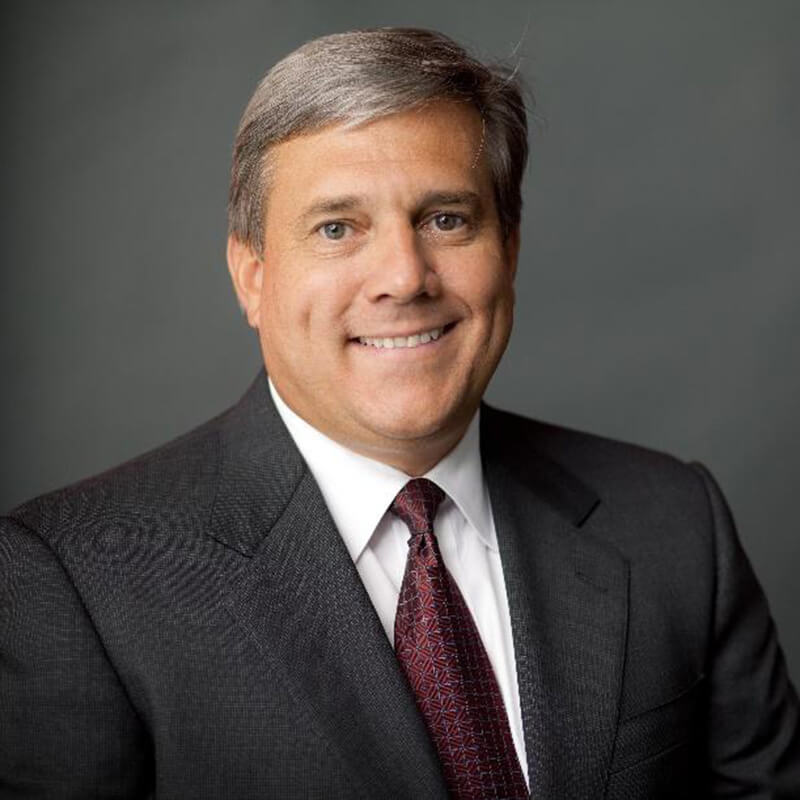Financial Structuring
& Management
by George Temple
President & COO, LS3P
LS3P President & COO George Temple shares advice for financial reframing and monitoring post-Covid-19.
DesignIntelligence (DI): The pandemic has focused us all on the importance of coming together. Most firms used technology for internal remote connection. Are you considering any external outreach to aid in your financial recovery?
George Temple (GT): LS3P is a Community-Focused Firm. We continuously connect and develop deep roots supporting community and relationships in each of our office locations and across our region. We are leveraging local connectivity and access to identify and create revenue sources and help other firms, especially our engineering consulting partners, GC partners, and Associated Architects. As an architecture and design firm, LS3P teams with over 100 engineering consulting partners inside and outside our region and routinely teams with other LFRT firms to augment design expertise to create superior outcomes for our clients.
We are exploring how to better support our industry partners on their projects in our locales. While LS3P is often the Architect of Record on projects in our region, we also offer service to our Associated Architects on other projects they may be supporting. Outreach to assist with Construction Administration services and to provide other local support is underway. Building more alliances with smaller firms, consultants, and general contractors continues to be a priority for our Business Development professionals.
DI: Will any of these require changes to firm structure or financial models? For example, conversion from Partnership to a C-Corp to allow retained earnings for future rainy day events?
GT: As part of our Leadership Evolution transition planning in 2018, we engaged our external accounting consultant and re-confirmed our C Corp structure as optimal for LS3P. We have benefited from corporate tax relief, retained earnings offset by R&D Tax Credits, and new programs for increasing deferred compensation to positively impact every eligible team member with greater financial security and more preparation for retirement. Preparing for the challenges ahead, cash conservation has been a recent top priority and year-end deferred compensation programs have been suspended pending 2020 financial outcomes.
A lesson learned from a decade ago: LS3P emerged from the great recession with financial resources gained from 179D Commercial Buildings Energy Efficiency Tax Deductions. These cash reserves were designated a non-operating asset and assigned exclusively as a backup funding source for stock redemption. This fund provides confidence and stability to our Shareholders during leadership transitions now and for the future.
DI: Assuming you were able to retain your key staff, what are your strategies to deploy and maximize their potential to help with financial balance?
GT: We continue to focus on high performance and best-in-class outcomes with our people. Increasing team members proficiency in our technology applications, specifically selected to enhance collaboration, is highly relevant to Work-From-Home (WFH) remote team member engagement.
LS3P has organized Knowledge Teams to assist with improving key aspects of practice and workflows aimed at refining our teams to deliver better services in less time. Investing in the development of our people remains a budget priority even during this COVID-19 Challenge. At the time of this writing, LS3P is maintaining professional development as a priority during firmwide budget adjustments. Reductions in travel and conferences expenses will positively impact our Professional Development budget. We value continuous learning and development in every member and aspect of the firm.
Like many firms, we are planning for possible transitions of underperforming team members. Our Vision and Values will prevail in guiding our approach for less tolerance for “less than excellent” in our firm.
DI: What role will technology play in your recovery? And how do you pay for it?
GT: LS3P has made strategic annual investments in technology for our practice and business to prepare for resiliency, advance capabilities, and increase capacities. These investments recently allowed for rapid adjustments from 8 offices to 345 work-from-home locations.
Our Technology Team is focused on increasing internal and external team collaboration by promoting our multiple generations of tech adopters and engaging our “laggards” in new technology and systems they previously ignored. Work-From-Home (WFH) has highlighted significant benefits of new technology applied to Practice and Business. We are engaging every team member to identify and share improvements realized in the past 5 weeks. Multi-generational adoption of Teams and Zoom is helping us become a better, more unified firm. We’ve made it a priority to determine new measures of productivity during work from home status, beyond direct labor targets and utilization.
DI: As you make financial and business adjustments, what guides your decisions? Will the pandemic necessitate your realigning practice priorities for strategic advantage?
GT: LS3P is focusing on Vision and Values to guide decisions forward—we recently revisited our Vision, now through 2025, and reconfirmed Values to inform our latest Strategic Plan. Our leadership evolution is deeply rooted in aligning Vision and Values with all Practice and Business priorities. We are a diverse regional practice of four primary, eight secondary, and four emerging market sectors. We rely on this diversity in our portfolio to shift practice resources to sustain and grow the firm. Some markets may grow, some may sustain, some may delay or decline, and LS3P will adjust accordingly.
DI: Operationally, do you see changes to project management and accounting controls for tighter - or different - overview?
GT: Yes. We have been increasing rigor in Project Planning and Resourcing to at least weekly to respond to dynamics of COVID-19 impacts to sectors. Work-From-Home (WFH) requires more accurate project planning by PMs to ensure team members are focused at least weekly on project tasks and deadlines, especially when project requirements change or stall. We compare project plans and billing projections from day one each month to billings outcomes at end of month with a margin goal not to exceed 10%.

Informed decisions are based on data, not gut feel. Dashboards, weekly Power BI reports, and consistent analyses are creating better outcomes. Weekly project plans updates need to be more frequent, especially when project go on hold or cancel. Continuous Project Pipeline Data Updates are high priority to direct business development resources. We implemented an Accounts Receivable Management System in 2019 to automate notifications to key personnel and keep accounts current.
DI: Externally, do you foresee changes in how you approach and work with clients to accommodate their challenges with revenues, payment and receivables?
GT: We are preparing to help financially stressed clients with payment plans to increase payment probability, connectivity, and relationship strengthening during COVID-19 Challenge for remaining quarters in 2020. Client Managers and PMs are encouraged to have frequent client communications to understand their Client’s situation and how to realign with them for forward momentum. We are encouraging regular project interactions with Clients via Zoom and phone to maintain connectivity and keep up with continuous changing circumstances. We evaluate cash weekly and have requisite balancing of cash flow dynamics with payroll as a priority.
DI: Lastly, might you look externally for creative new funding sources and tools?
GT: We are embracing CARES Act PPP Loans/Grants to add tools to our financial toolkit. We’ve implemented minor accounting adjustments for the additional benefits afforded by the FFCRA for paid sick leave and expanded family and medical leave (FMLA). We are applying the following approach:
- Focus on creating more stability for our people when financials are still strong
- Preparing two months of payroll and rent support to extend cash for additional protection from expected increases in aging accounts receivable and doubtful accounts
- Provide more flexibility and financial security for team members to address family and dependent care
- Renew our annual Line of Credit with potential increase to further protect financial security of business continuity—an additional hedge to address future aging accounts receivable
George Temple serves as LS3P’s President and Chief Operations Officer. With a unique background in architecture and technology as well as military service, George brings significant expertise in innovative problem-solving to the firm’s eight offices and 345 employees. He oversees LS3P’s business operations and finance, leading a multidisciplinary team of CPAs and accountants, technology professionals, human resource professionals, an in-house counsel, and Operations and Finance Managers with the mantra “Business supports Practice.”
An honors graduate of Carnegie Mellon University, George served as a regular officer and architect in the Air Force for seven years. He attended programs at the Air Force Institute of Technology, Harvard’s Kennedy School of Government, and the Defense Intelligence College. In his current role, he inspires technology research, discovery, design, and application of creative solutions to improve efficiency and service delivery across all aspects of the firm. He is actively engaged in community and professional organizations including the Charleston Regional Development Alliance and the AIA.


